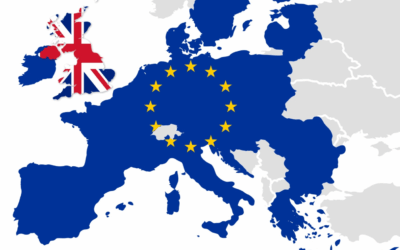As a traditional cry of the Dutch Carnival, “Alaaf!” evokes thoughts of the vibrant and festive celebrations that take place not only in the Netherlands, but also in many other countries around the world that mark the Carnival season.
The Dutch Carnival has its roots in the Christian tradition, and it is believed to have originated as a way for people to celebrate and enjoy themselves before the solemn period of Lent, which begins on Ash Wednesday. The Catholic Church traditionally observes a period of fasting and repentance during Lent, and the Carnival was seen as a way to indulge in earthly pleasures before the period of self-denial that would follow.
In the Netherlands, many Carnival celebrations begin with a religious service, which may include a sermon or homily. This is because the Carnival is traditionally associated with the Catholic Church, and many Carnival associations and participants are still members of the Catholic faith.
The Carnival season in the Netherlands officially begins on the 11th of November, but the main festivities take place in the days leading up to Lent, with the biggest celebrations occurring on the weekend before Ash Wednesday. On this day, many Carnival associations participate in a procession to the local church, where a special Carnival mass is held. This mass may include special music, readings, and prayers, and may be followed by a sermon or homily that reflects on the themes of the Carnival, such as indulgence, celebration, and community.
While the Carnival is a secular festival that is enjoyed by people of all faiths and backgrounds, the connection to the Catholic Church is an important part of its history and cultural significance in the Netherlands. The religious elements of the festival serve as a reminder of its origins and help to maintain a sense of continuity and tradition.
The origin of the Dutch Carnival can be traced back to pre-Christian times, when Germanic tribes in the region that is now the Netherlands celebrated the arrival of spring. These celebrations were marked by feasting, drinking, and the wearing of masks and costumes. With the arrival of Christianity, the pre-Lenten festival was incorporated into the Christian calendar as a way to prepare for the solemnity of Lent.
The Catholic Church has traditionally observed a period of fasting and repentance during the 40 days leading up to Easter, known as Lent. In order to prepare for this period, a time of celebration and excess was often observed beforehand. The Dutch Carnival is a pre-Lenten festival that takes place in the southern part of the Netherlands, and is believed to have originated as a way to mark the transition from winter to spring, as well as to prepare for the period of fasting that would follow.
The Carnival in the Netherlands was historically a time for social inversion and satirical commentary, with people dressing up in costumes and mocking authority figures such as the clergy and nobility. This tradition continues today, with parades, parties, and satirical performances being a major part of the Dutch Carnival. In recent years, the Dutch Carnival has become more commercialized and tourist-oriented, but it remains an important part of the country’s cultural heritage.
The Dutch Carnival is celebrated in various ways throughout the southern part of the Netherlands, with each region and city having its own unique traditions and customs. Generally, however, the Dutch Carnival is characterized by parades, music, dancing, and the wearing of costumes and masks.
During this time, many towns and cities hold parades featuring elaborate floats, marching bands, and costumed participants. The parade is often led by a prince and princess, who are chosen by local Carnival associations. People of all ages participate in the Dutch Carnival, with many wearing colourful and often outlandish costumes, masks, and wigs. Drinking and partying are also a big part of the celebration, with many bars and clubs staying open late into the night.
In addition to the parades, many Dutch towns and cities also hold street parties, with music, food, and other entertainment. Children often have their own celebrations, with special children’s parades and events. While the Dutch Carnival is a time of fun and revelry, it also has deeper cultural and historical roots, and many people take pride in preserving the traditions and customs associated with the festival.
Being from South Africa and having attended many “Kaapse Klopse” celebrations, I could see a link between how the Dutch Carnival, the Kaapse Klopse and the Mardi Gras in New Orleans, USA which I attended some years ago. These celebrations all have roots in pre-Lenten festivities that were popular in many European countries, particularly in Catholic regions.
The Kaapse Klopse in South Africa, also known as the Cape Town Minstrel Carnival, is a similar pre-Lenten festival that originated in Cape Town. It is believed to have been brought to South Africa by slaves from Southeast Asia and Madagascar. The festival is characterized by colourful costumes, music, and dance, and it is celebrated on the 2nd of January, which is also known as “Tweede Nuwe Jaar” (Second New Year).
The Mardi Gras in New Orleans, USA, is also a pre-Lenten festival that originated in medieval Europe. It is believed to have been brought to the United States by French settlers, and it is now a popular celebration in New Orleans and other parts of Louisiana. During Mardi Gras, people wear masks and costumes, attend parades, and participate in other festive activities.
All of these celebrations share similarities in their focus on costumes, music, dance, and revelry, as well as their pre-Lenten timing. So, while they may have evolved differently in different parts of the world, they all have a shared heritage in the pre-Lenten festivals of medieval Europe.
Many other countries around the world celebrate Carnival, especially in the period leading up to Lent. Some of the most famous Carnival celebrations take place in:
- Brazil: The Carnival in Brazil is perhaps the largest and most famous in the world. It takes place in various cities throughout the country, with the biggest and most spectacular celebrations happening in Rio de Janeiro, Salvador, and Recife/Olinda.
- Trinidad and Tobago: The Carnival in Trinidad and Tobago is a vibrant and colourful celebration that is famous for its music, dancing, and elaborate costumes.
- Italy: In Italy, Carnival is celebrated in many different cities and regions, with the most famous celebrations taking place in Venice, Viareggio, and Ivrea.
- Spain: In Spain, Carnival is celebrated in many different cities and regions, with the most famous celebrations taking place in Tenerife, Cadiz, and Sitges.
- Germany: Carnival, known as “Karneval” or “Fasching,” is celebrated in many cities throughout Germany, with the most famous celebrations taking place in Cologne, Düsseldorf, and Mainz.
- France: Carnival is celebrated in many different regions of France, with the most famous celebrations taking place in Nice, Dunkerque, and Mulhouse.
- Caribbean islands: Many Caribbean islands celebrate Carnival, including Trinidad and Tobago, the Dominican Republic, Haiti, and St. Lucia.
These are just a few examples of the many countries that celebrate Carnival at this time of year. Each celebration has its own unique traditions and cultural significance, but all are characterized by music, dancing, costumes, and general merrymaking.
The Dutch Carnival is celebrated in various ways throughout the southern part of the Netherlands, with each region and city having its own unique traditions and customs. Generally, however, the Dutch Carnival is characterized by parades, music, dancing, and the wearing of costumes and masks. While the Dutch Carnival is a time of fun and revelry, it also has deeper cultural and historical roots, and many people take pride in preserving the traditions and customs associated with the festival.
The Dutch Carnival is organized by local Carnival associations, which are typically made up of volunteers who work throughout the year to plan and prepare for the festival. These associations play a central role in organizing the Carnival parades, parties, and other events, as well as in preserving and promoting the cultural heritage of the festival.
The origin of these associations can be traced back to the 19th century, when Carnival celebrations in the Netherlands became more organized and structured. At this time, groups of friends or neighbours began to come together to plan and coordinate their own Carnival activities, often forming small clubs or societies. These groups would design and build their own floats, organize their own parades and parties, and compete with other groups for prizes and recognition. Over time, these small clubs and societies grew in size and number, eventually coalescing into larger Carnival associations that represented entire towns or regions. These associations developed their own unique traditions and customs, and often became an important part of local cultural and social life.
Today, there are hundreds of Carnival associations throughout the Netherlands, with many of them dating back decades or even centuries. These associations are typically led by a prince and princess, who are chosen by the association and play a central role in the Carnival festivities. Many associations also have their own uniforms, crests, and other symbols, which serve to distinguish them from other groups and to build a sense of community and shared identity.
The Dutch Carnival does have some impact on the fiscal budget, but the extent of this impact can vary depending on the region and city in which it is celebrated.
In some towns and cities, the Carnival is a major tourist attraction, drawing visitors from both the Netherlands and abroad. This can have a positive economic impact, as businesses such as hotels, restaurants, and souvenir shops see increased demand during the festival. The Dutch government may also collect additional tax revenue from these businesses and from the sale of Carnival-related merchandise and services.
However, there are also costs associated with hosting the Carnival, such as providing security, cleaning up after the parades, and managing traffic and transportation. In some cases, these costs may be partially or fully covered by local government funding or by Carnival associations, but in other cases, they may be borne by taxpayers. Overall, the fiscal impact of the Dutch Carnival is likely to be small in comparison to the country’s overall budget, and the cultural and social benefits of the festival are often seen as outweighing any costs or economic considerations.
In the southern province of Limburg, the Carnival is known as “Vastelaovend” and is celebrated with elaborate parades, costumed revellers, and a variety of local traditions and customs. In the city of ‘s-Hertogenbosch (also known as Den Bosch), the Carnival begins with a tradition known as the “herring biting” in which the Carnival prince and other officials bite into a raw herring to officially kick off the festivities. In the city of Breda, the Carnival includes a popular tradition known as “Kielegat” in which local businesses and organizations compete to create the most elaborate and creative Carnival floats.
Each region and city also has its own unique Carnival songs, dance styles, and other cultural elements that contribute to the rich and diverse tapestry of the Dutch Carnival. This variety and diversity make the Carnival a truly unique and fascinating cultural phenomenon that is deeply ingrained in the social and cultural fabric of the Netherlands. Many Carnival associations and participants adopt their own motto or theme for the year, which reflects the values and themes of the festival.
Some common themes of the Dutch Carnival include celebration, community, humour, satire, and indulgence. Many Carnival associations also emphasize the importance of social responsibility, and may use their activities and events to raise money for local charities or community projects.
Overall, the Dutch Carnival is a festival of fun, joy, and creativity, with a strong emphasis on social interaction and community building. While each region and city may have its own unique approach to the Carnival, the underlying values of celebration, humour, and community are a common thread that runs through all of its manifestations.
The Dutch Carnival is known for its many fun and light-hearted traditions, which are intended to bring joy and laughter to participants and spectators alike. Here are some examples of some of the funniest traditions around the Dutch Carnival:
- The “prinsentreffen“: This is a tradition that takes place in many cities and towns in the Netherlands, in which the Carnival prince (or princes) from each municipality meet and engage in playful, often comical, banter with each other. This event is a light-hearted way to celebrate the diversity and creativity of the different Carnival associations.
- The “boerenbruiloft” (farmer’s wedding): This is a tradition in which a mock wedding is held, in which a farmer and his wife are celebrated in a comical, satirical way. The bride and groom, as well as their wedding guests, often wear elaborate, colourful costumes and engage in humorous skits and songs.
- The “prinsenbal” (prince’s ball): This is an event in which the Carnival prince and his retinue invite members of the public to a dance party, often with live music and lots of energetic dancing. This is a fun and social way to celebrate the Carnival and connect with members of the community.
- The “optocht” (parade): Many Dutch Carnival celebrations feature a colourful and lively parade, in which Carnival associations and other groups march through the streets in elaborate costumes and floats. These parades often include humorous and satirical elements, as well as fun music and dance.
The festival is all about having fun, letting loose, and enjoying life with friends and family, and the many traditions and customs associated with it reflect this joyful and celebratory spirit.
Sources:
https://www.reginacoeli.com/blog/alaaf!-the-language-of-dutch-carnival.html
https://learnenglish.britishcouncil.org/general-english/magazine-zone/carnival
https://www.reuters.com/article/uk-travel-picks-carnival-idUSLNE81G01I20120217
Photo by Pixabay: https://www.pexels.com/photo/abstract-art-beautiful-bright-268481/



